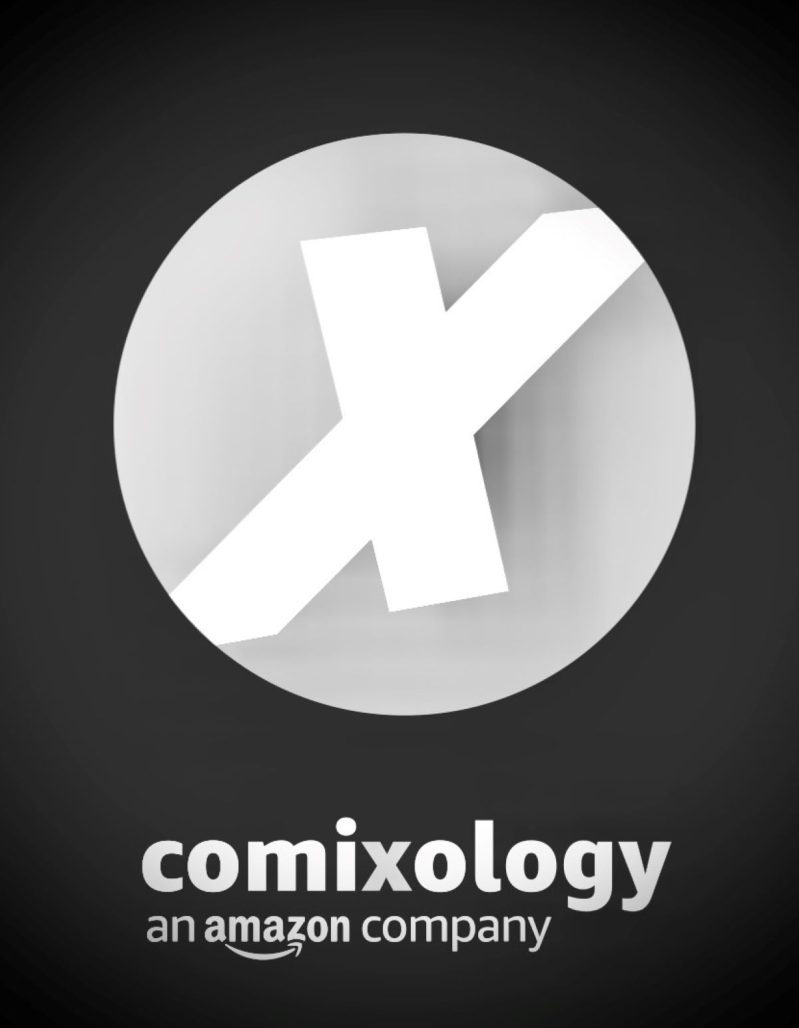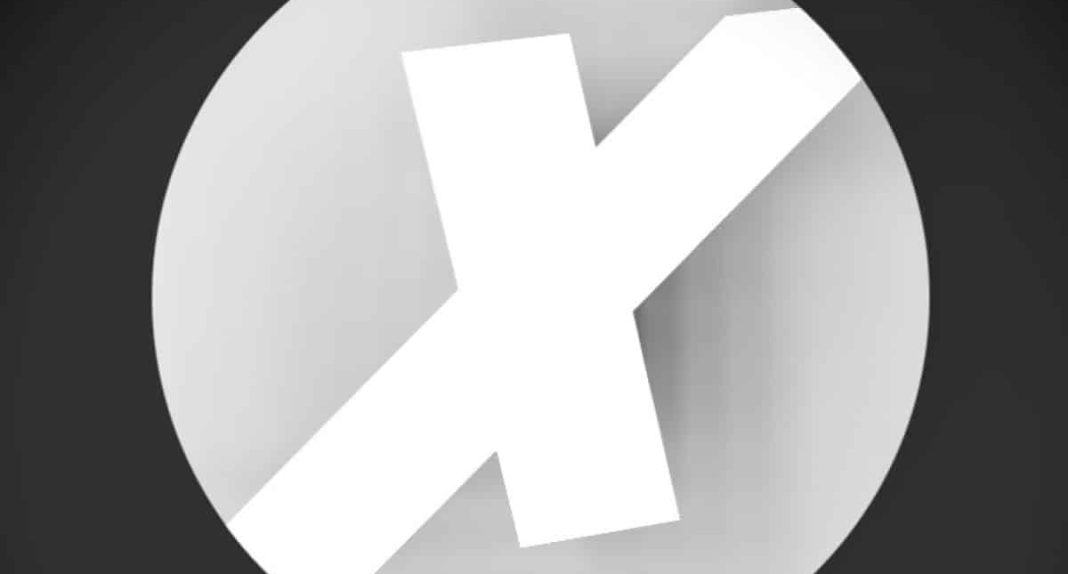So here we are. December 4, 2023. The end of an era. The day set in stone as when Comixology (the app, the reader, the digital distribution service, the hallmark of what digital comics could offer) truly disappeared from the world, swallowed in its entirety into the Kindle app; the brand name retained simply as a ghost in Amazon’s future efforts to half-heartedly shore up the near-buried comics side of the Kindle segment of its $1.52 trillion business empire.
One could argue other dates for this end – for long time customers, that day came with the massive PR disaster that was the rollout of ComiXology 4.0 on February 14, 2022 – which was promised as a leap in the platform but in reality was seen as a massive setback, forcing the fluidly functional code architecture into Amazon’s own proprietary Kindle format; and the removal of the website – redirecting customers to Amazon’s own facsimile portal within the online store, which has struggled to catch up or match the (admittedly imperfect) Comixology storefront it replaced.
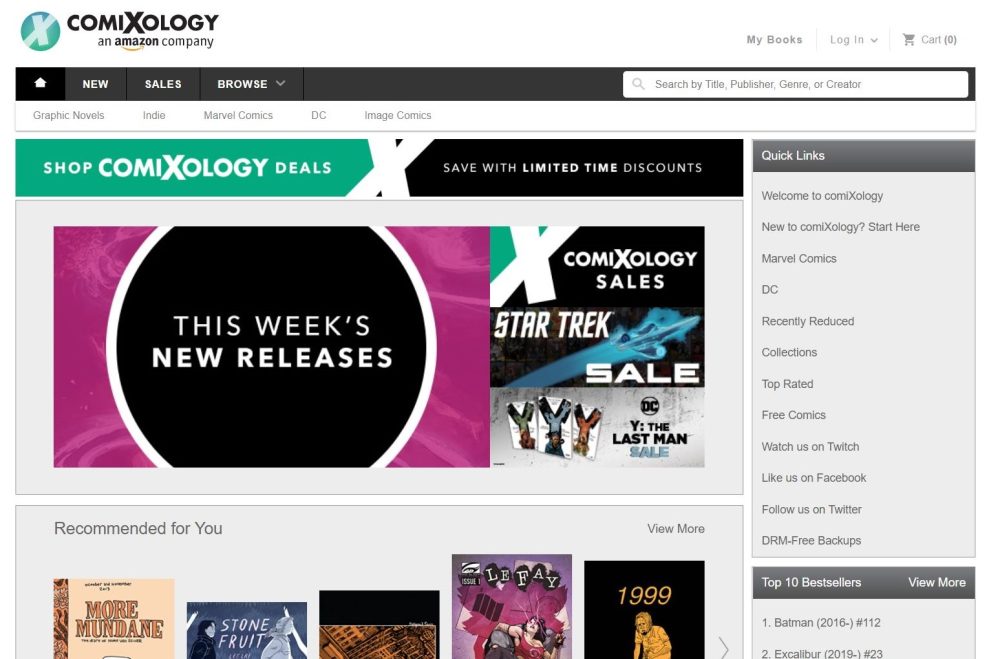
For staff, the end of Comixology could be the moment Amazon internally dictated the switchover to Kindle in a bid to reduce “duplication” of services (which was announced to the public September 1, 2021), or perhaps January 18, 2023 when Amazon – in its bid to reduce ballooning costs from aggressive pandemic expansion across the board – laid off nearly the entire company of approximately 200 people. Today only a handful remain, now rolled into the Amazon Kindle technical department proper, trying their best to do right by the promise of the company they helped build.
But maybe another date could be indicated in the downfall of Comixology. The first date that made this inevitable: April 10, 2014. When Amazon publicly announced its acquisition of the plucky startup. An acquisition of – according to the Amazon press release at the time:
“the company that revolutionized the digital comics reading experience with their immersive Guided View technology and makes discovering, buying, and reading comic books and graphic novels easier and more fun than ever before.”

“Revolution” was definitely what made Comixology stand out from the crowd, making digital comics seem like a viable, even natural, reading experience. The company was formed in 2007, in the same year as Apple’s unveiling of the first generation iPhone which marked the dawn of today’s portable smart-tech age. Startups burst onto the scene with renewed vigour, birthing new apps aimed at disrupting perceived logjams in everyday life. It was a wild west of ideas.
Comixology was the brainchild of three people – John Roberts, David Steinberger (two lifelong fans on the medium), and analytics expert Peter Jaffe. They had initially begun trying to develop a web-based comics reader but the announcement of the iPhone made everything radically click into place: to develop a single app to buy and read your comics. One of the things that helped them stand out from the crowd was their “Guided View” technology; a simple yet extremely effective way in which readers could enjoy their comics panel by panel on the soon-to-be-ubiquitous digital small screen.
John Roberts, in a 2022 interview, explains it:
“Guided View was a technology that comiXology created that allowed you to basically take a guided tour around the comic book page. We did this for a couple reasons. [For one,] it was cheaper. We had competitors that were basically chopping up the page into screen size chunks and in some cases redesigning it so that it would fit. It was labour intensive and not really scalable.”
He added:
“We thought [to instead] show you a little part of the screen at a time. We start up at the top left and just move you around from panel to panel….We basically created a way for you to read with one hand on your iPhone. If you were on the subway or holding your baby you could read your comics with one hand, panel by panel, and [be able to] zoom in. The page remained untouched. If you wanted to you could read it in full page mode, you could zoom in, you could pan around, you could do whatever you want. But if all you wanted to do was read the story, you could go panel by panel.”
Guided View had surprising benefits – including helping the sight impaired to continue to enjoy their weekly releases when traditional print became unviable. The app itself was also particularly beneficial to those that lived beyond the reach of their local comic shop, frequent travellers, and more.
It wasn’t the only thing that helped Comixology grow. The company’s founders were very keen to respect publishers, giving them an equal footing and say in their emerging digital comics platform.
Roberts again:
“We saw our publishing partners as partners. We worked with them to make sure that the experience wasn’t just fit for us but fit for them as well. We had some competitors that were dictating the way things had to be done – we didn’t want to do that. We wanted our publishing partners to want to work with us; to collaborate with us; to come to us and say “We have this really good idea and we want to work with you on it.” We worked really hard to foster those relationships and try not to alienate anyone.”
The growing number of publishers on board benefitted everyone – for Comixology, it provided evidence of the value of and confidence in the service it was providing; for readers, it became the one-stop-shop to (legally) construct the most complete library of digital comics; for the publishers themselves, the sense they were part of a robust ecosystem that would get more eyes on their books in what was a confusing online marketplace. It wasn’t perfect but it was leagues ahead of other competitors in the 2010s.
Some publishers also had Comixology develop standalone apps, linked to the service but focused around their own output and branding. For a time there was a whole bunch: Marvel, DC (and its Vertigo imprint), Image, IDW – all had an app built by Comixology. Marvel’s Comixology-powered app in 2010 was the first and came out at the perfect time: launching coincidentally with the arrival of the first generation Apple iPad, and was installed as one of the apps to demonstrate the utility of the first commercial tablet computing device.
The company grew in ability and offerings. Keen to build and reach out to publishers big and small it introduced the Comixology Submit initiative, providing the access point for small press and indie publishers to launch books on the platform; it had its own podcast, The comiXologist (October 2007-May 2017); it offered subscription services to keep busy fans up to date; it also had fiendishly good sales with steep discounts from a plethora of top publishers (Fantagraphics! Dark Horse! Viz!). The partnership with Marvel to redeem codes from print comics to get a free digital copy also brought new eyes to its ecosystem and returning custom. It even worked out how to effectively deliver a manga reader, and introduced “HD Comics”, raising the resolution and viewable detail of books as screens evolved. It had become the market leader – made by fans, for fans. But it could only grow so far. Enter: Amazon.
Amazon had launched into the digital reading space with Kindle in 2007, with its inhouse line of ebook distribution adjoined to proprietary tablets and ereaders, but it was struggling to make comics as successful as its traditional (text-based) ebook line – not least on the reading side. Quality was often poor, page turns were slow, the ability to zoom into a page was often not available, and its own attempt at panel-view struggled. Publishers were reluctant to sign on. It was, by 2014, not the go-to service for digital comics readers. Being a large corporation with deep pockets, it had money to spend on bridging the gap – it could hire more engineers, or purchase a company that was doing it better. And Comixology was up for sale. The startup had hit the limits of what its growth and funding-rounds could achieve without major additional investment – which would have added more risk in staying independent – or finding a buyer with money to burn to secure the company’s immediate future and help it evolve further. It was – at the time – a win-win. Amazon had procured the expertise, enthusiasm, and experience of Comixology, while Comixology could remain as the de facto name in digital comics, doing right by its staff and the customers who had already sunk considerable sums of time and money into the service, 7 years in.
The acquisition happened, described by Comixology as a “team-up” of equals to assuage the concerns of fans. Almost immediately there were some surprises – Amazon had Comixology remove purchasing from within its iOS app on iPad and iPhone, in order to avoid losing 30% of each transaction to Apple, being one public example. It caused an uproar at the time but the rapid improvements to the Comixology website’s speed and functionality on mobile browsers meant it was more a frustration than a hardship (a similar action later happened May 31, 2022 on Android – but without a competent storefront to assuage the frustration of customers). That said, largely the operation of Comixology continued to run its course, with Amazon money and backing allowing it to outlive competitors while retaining the fan-favourite app, online store, and its further expansions into publishing, with the Comixology Originals line by top industry talent launching in June 2018. It had even introduced Comixology Unlimited, an all-you-can-eat subscription program, in May 2016. It was a good time to be a digital comics reader and fan. At least until 2021 and the announcement of 4.0.
September 1, 2021, then-CEO of Comixology David Steinberger released a statement promising big changes were happening to the app – with a new version being released that would bring Comixology more in line with Kindle, touting user interface improvements and more. Version 3 had, admittedly, been around a long time and was starting to show its age; users were hoping to see improvements. But then there was the other announcement – the online store was being shut down too. And the Amazon equivalent they were told to look towards seemed…under-baked. Users got nervous. Come the switch to 4.0 on February 14, 2022, they got furious. Libraries weren’t syncing, or disappeared; the app struggled to start or run without crashing. Even more bizarrely, Amazon’s own Kindle Fire tablets couldn’t get the app to start at all. The Comixology social and support channels were largely silent or struggled to manage the tidal wave of acrimony. Over successive months there were a mere handful of instances where beleaguered Comixology staff behind the scenes were able to publicly say that complaints were being heard and improvements on the way. Still, the rollout to 4.0 pretty much left a bad impression in the minds of users – and the sense that the brave new world of 4.0 was anything but. The changes to the store (with some territories completely locked out), the poor communication, and the burying of digital books in Amazon search results, was not easing the concerns of publishing partners either.
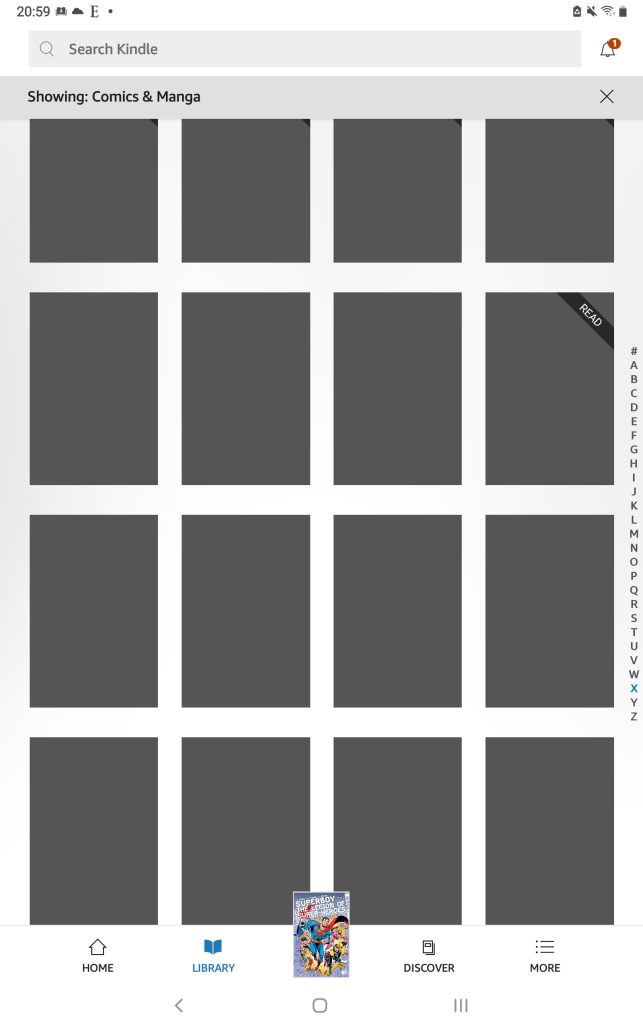
Pre- and post-4.0, there were smaller events that showed that Comixology’s end was nearing. The company’s engineered DC Comics app closed July 28, 2021; Marvel’s held on a little longer, standing tall as the last evidence of the way Comixology’s apps used to run, before shutting down and libraries merged into the Marvel Comics Infinite app on June 2, 2023. In terms of personnel, the departure of its CEO, co-founder, and public face David Steinberger on March 10, 2022 to another part of Amazon before leaving entirely on June 30 the same year was a big sign. Fellow co-founder John Roberts had similarly left for an internal Amazon position in July 2019 before leaving outright in April 2021 (Peter Jaffe served as Director of Business Intelligence at Comixology, he left the company in 2015). Comixology’s former PR guru, Head of Content, and Comixology Originals pioneer Chip Mosher also announced his departure from the company June 28. Both Steinberger and Mosher have since found their feet establishing new comics publisher DSTLRY with their own ideas for digital. Chip’s replacement as head of Comixology Originals Bryce Gold announced his departure May 23, 2023 – with the longevity of that program being called into question.
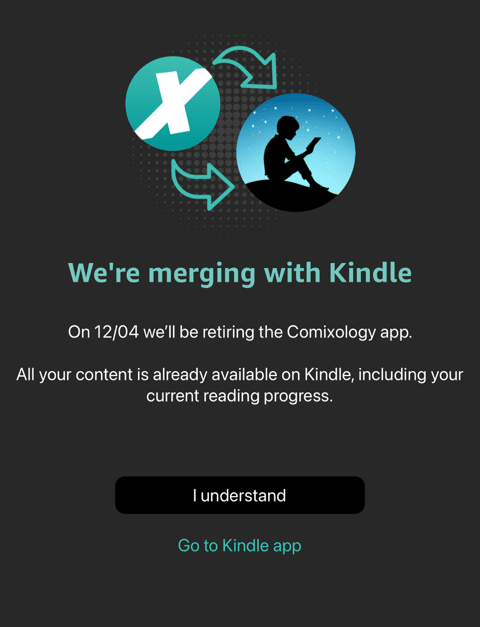
November 14’s announcement of the Comixology app’s closure came as little surprise. Since the 4.0 switch and backlash, the app had been rushing to – if not match the quality of old Comixology – at least get the product stable enough to not crash or freeze as often. And this bare minimum of requirements being ignored or dismissed by Amazon management in pursuing the rollout (which had initially been delayed to prepare publishers – especially those on Comixology Submit) coupled with the seemingly near complete stonewall of customer complaints has made the last 22 months feel more farcical than tragic. With Comixology social media – long outsourced to a PR company – accruing a dedicated number of negative comments and reactions from jilted customers.
One hopes Amazon will finally learn what made Comixology great in order to make the changes necessary to genuinely improve the wider Kindle service and the discoverability of books – albeit 9 years too late – but given how long it took to reach bare minimum functionality again, that is too good to hope. No good intention or broad strategy survives the divergent interests of the bottom line.
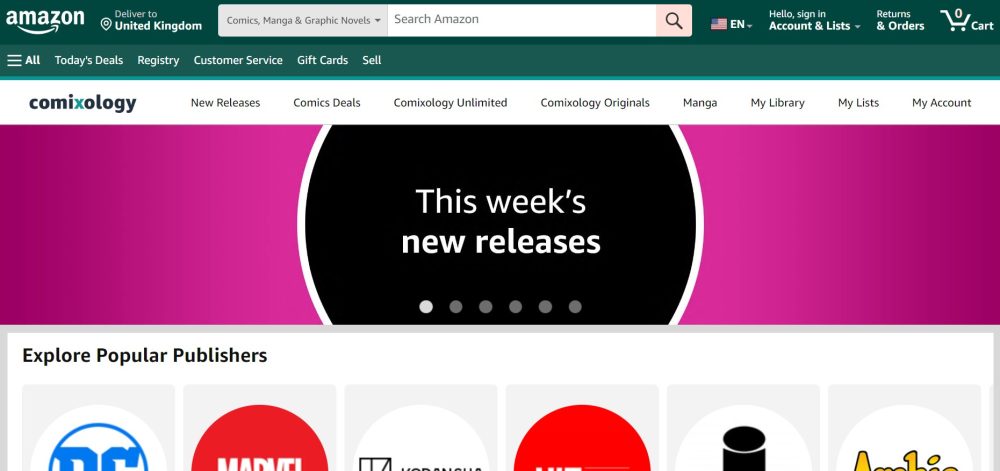
The Amazon-induced struggles and erasure of Comixology has bolstered new upstarts – GlobalComix and Omnibus in particular. Consumers and publishers rendered skittish by the uncertainty, fraught relations, and downgrade in service are definitely looking for an alternative. Whether the alternatives can provide a new, better vision for digital comics, digital distribution and reading experiences rather than attempt to replicate or reinvent the wheel will be a big question. An even bigger question, highlighted by the Amazon-Comixology debacle, of the balance between consumer rights versus protecting copyright in the age of digital media will continue to echo. What do customers really own? How much knowing consent do they have in transactions for so-called “digital goods”? Can they backup whatever they pay for offline? How do authors and publishers protect their work from being uploaded and distributed for free, without consent? These will rattle on.
More attention is being paid to purchasing digital books DRM-free directly from publishers (e.g. 2000 AD, Vault), from Humble Bundle and Kickstarter, but the number of publishers willing to offer that has so far remained limited. Larger publishers, with deeper pockets and IP they aggressively want to retain control are leaning harder on the à la carte “streaming model” – exemplified by Marvel Unlimited, DC Universe Infinite, MangaPlus, and Shonen Jump/Viz Manga – where a monthly fee gives unrestricted access to the library. And those that have entirely lost faith in paying for digital comics have (legally) free alternatives with the likes of Webtoon.
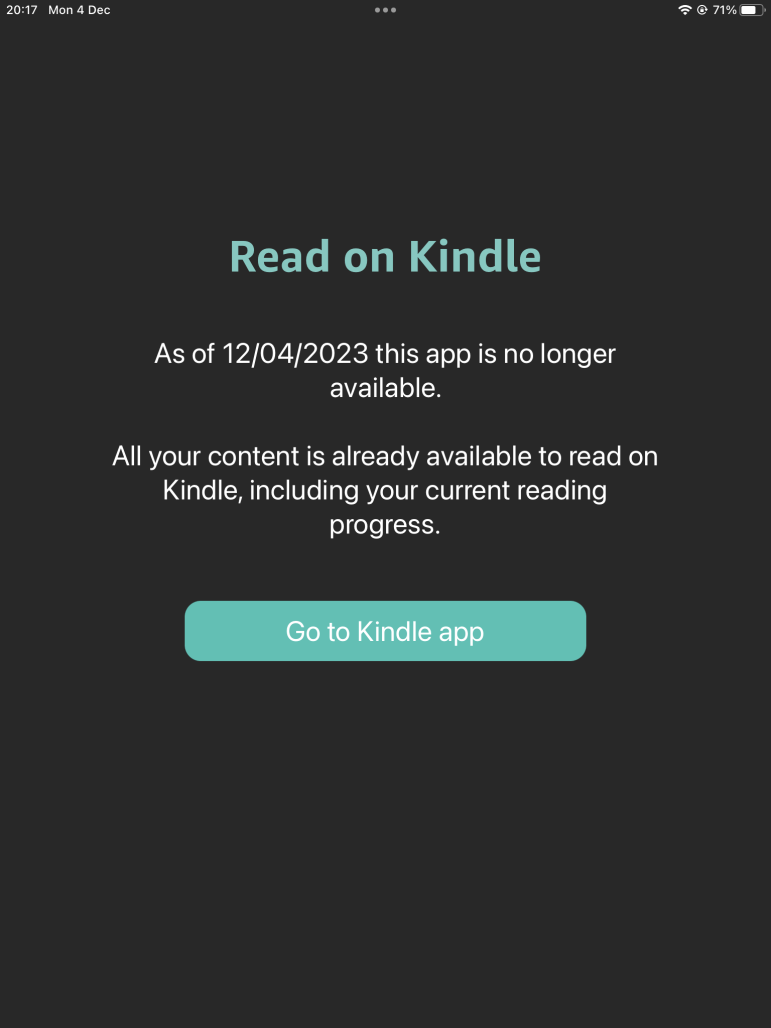
The end of Comixology now feels like a mercy killing. The outrage initiated by February 14, 2022 has killed much of the goodwill towards the Comixology brand, Amazon, and the promise of digital comics (and digital media) for consumers and publishers. It will take a long time to recover. It should not have been this way but here it is.
It was good while it lasted.
